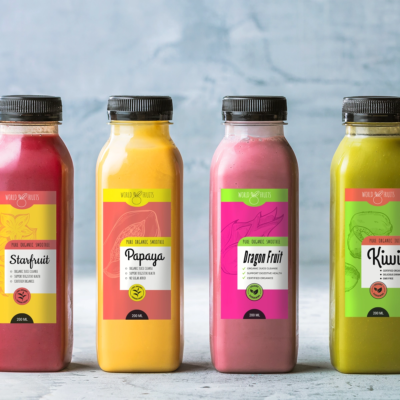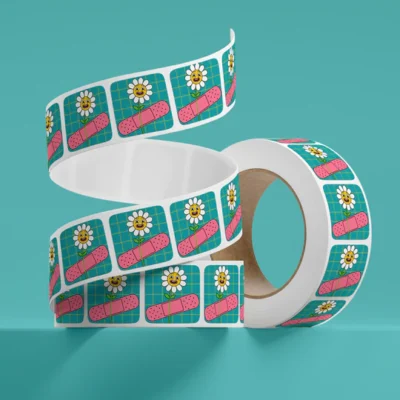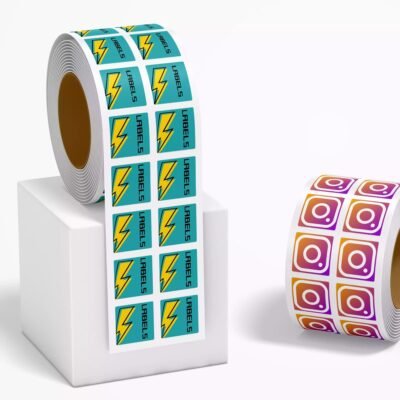Vinyl stickers are known for their strength and durability, especially when compared to other types of stickers often made from paper. However, if you want to enhance the longevity of your custom-made vinyl stickers and make them more resistant to sun and water exposure, sealing is the way to go. In this article, we’ll guide you on how to seal vinyl stickers on plastic surfaces.
Why Should You Seal Vinyl Stickers?
Custom vinyl logo stickers are naturally waterproof and water-resistant, making them ideal for application on items like tumblers, lunch boxes, and other objects exposed to water and frequent washing. There’s even a variation called permanent vinyl that can last for years.
Despite their inherent durability, it is advisable to seal vinyl stickers to improve their lifespan. With a heavy-duty sealant, you can protect your vinyl stickers from peeling, cracking, and fading over time.
Use the Right Glue or Polyurethane Spray
To achieve the best results, it’s crucial to select the appropriate adhesive for sealing your vinyl stickers. Decoupage glue is the most suitable choice—it’s similar to white glue in that it applies opaquely but dries clear. It is also stronger and serves well as both a sealant and adhesive.
Alternatively, you can opt for polyurethane spray, which imparts a protective satin clear varnish to the sticker. Regardless of your choice, ensure that the adhesive is compatible with plastic surfaces.
Clean the Plastic Surface
The first step is to clean the plastic surface thoroughly, removing any dust or dirt that could compromise the sticker’s adhesive properties. Wash the surface with soap and water, then allow it to dry completely before applying the sticker.
Note that some stickers adhere better to plastic than others. Assess the adhesive strength—if it sticks firmly, press the sticker securely in place. If not, you’ll need to adhere it with glue.
Stick the Stickers
For stickers that don’t adhere well to plastic, you’ll need to either glue them down using decoupage glue or apply polyurethane spray. If you choose the former, use a paintbrush to apply a thin layer of decoupage glue to the intended placement area. If using polyurethane spray, evenly coat the area with the solution.
Press the sticker firmly in place while the glue or spray is still wet. Before proceeding with sealing, ensure that the adhesive has fully dried; otherwise, it may compromise the quality of the seal. Depending on the sticker’s size and the amount of adhesive used, allow it to dry for one to two hours.
Seal the Stickers
Once the glue has dried completely, and the stickers are securely in place, it’s time to begin the sealing process. If you’re using decoupage glue, use a paintbrush to apply a thin layer of glue over the stickers and also around the edges of the glue.
Allow the first coat to dry completely. Once dry, repeat the process to apply a second coat, and add more coats if you desire a stronger seal.
If you’ve chosen polyurethane spray to seal your vinyl stickers, evenly spray the solution onto the sticker and its edges. Let it dry for approximately 30 to 60 minutes, then apply another coat. You can repeat this step three or more times for a stronger seal. Liquid polyurethane can also be applied similarly to decoupage glue.
Following this process, you’ll have sealed stickers that are better equipped to withstand water and weather elements. Sealing helps prevent issues like fading, curling, peeling, and cracking, ensuring that you can enjoy your vinyl stickers for years to come.
Bonus: Waterproof the Stickers
While sealing your vinyl stickers enhances their durability, you can further strengthen them by waterproofing. Decoupage glue and polyurethane spray offer water-resistant qualities, but for a fully waterproof finish, consider using a clear acrylic sealant or spray enamel.
Both products come in brush-on or spray-on formulas, so choose based on your preferences. Apply the solution in one or more coats after the final layer of sealing has dried.
Wrapping Up
Sealing your vinyl stickers will significantly improve their durability and prolong their lifespan, particularly for stickers applied to plastic surfaces exposed to water, such as tumblers or lunch boxes. To ensure your sealed vinyl stickers last even longer, take good care of the item by hand-washing it instead of using a dishwasher. After exposure to wet conditions, be sure to wipe the sticker dry.





